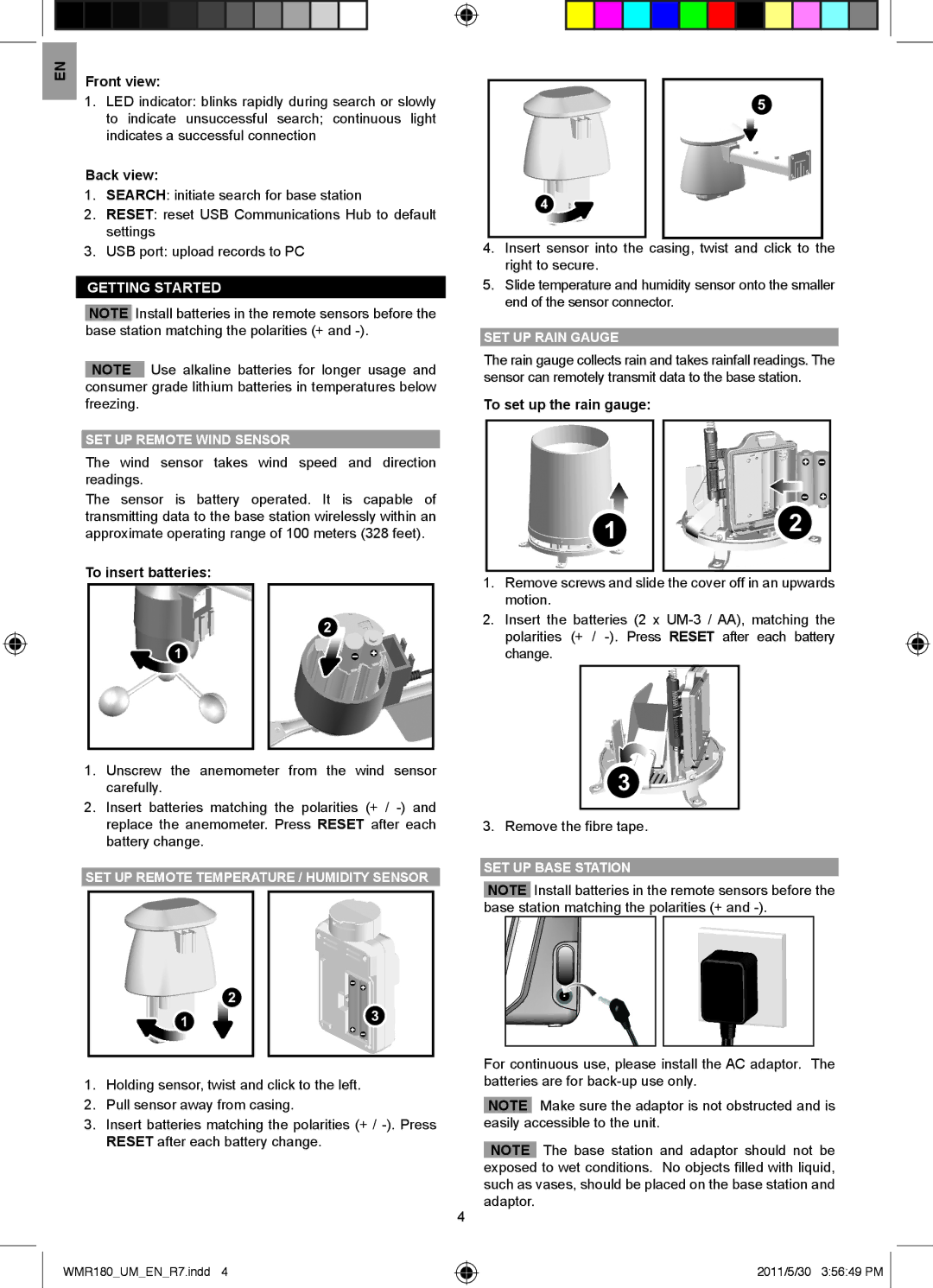WMR180, WMR180A specifications
The Oregon Scientific WMR180A and WMR180 are innovative weather stations designed for both amateur meteorologists and weather enthusiasts. These devices offer a comprehensive approach to tracking environmental conditions, making them a valuable addition to any home or office.One of the standout features of the WMR180A and WMR180 is their ability to monitor a wide range of weather parameters. Users can check real-time data on temperature, humidity, wind speed, wind direction, rainfall, and barometric pressure. This multitude of metrics allows users to have a holistic view of their local weather conditions, which can be particularly useful for planning outdoor activities, gardening, or understanding microclimates.
The design of the WMR180A and WMR180 is user-friendly, featuring an easy-to-read LCD screen complete with intuitive icons that simplify data interpretation. The display is designed to clearly show key information at a glance, ensuring that users can quickly access the data they need without navigating complex menus.
Another significant feature is the wireless technology used in these models. The sensors communicate with the main unit through a 433 MHz wireless signal, which ensures accurate and reliable transmission of data from the outdoor sensors to the indoor display unit. This wireless capability allows for greater flexibility in sensor placement, making it easy to position the various sensors around the property to capture the most accurate environmental readings.
Additionally, the WMR180A and WMR180 include advanced features such as memory for historical data, allowing users to track changes over time. This data can be vital for understanding weather patterns and trends in a particular area. Some models even come equipped with software compatible with Windows, enabling users to analyze their data on a computer.
Moreover, both models are built with durability in mind. The outdoor sensors are designed to withstand various weather conditions, ensuring they remain operational even in tough environments.
Overall, the Oregon Scientific WMR180A and WMR180 combine advanced technology with user-friendly features, making them ideal for those passionate about weather monitoring and environmental science. With their extensive capabilities, these weather stations represent an excellent investment for anyone looking to gain insight into the complexities of local weather.

